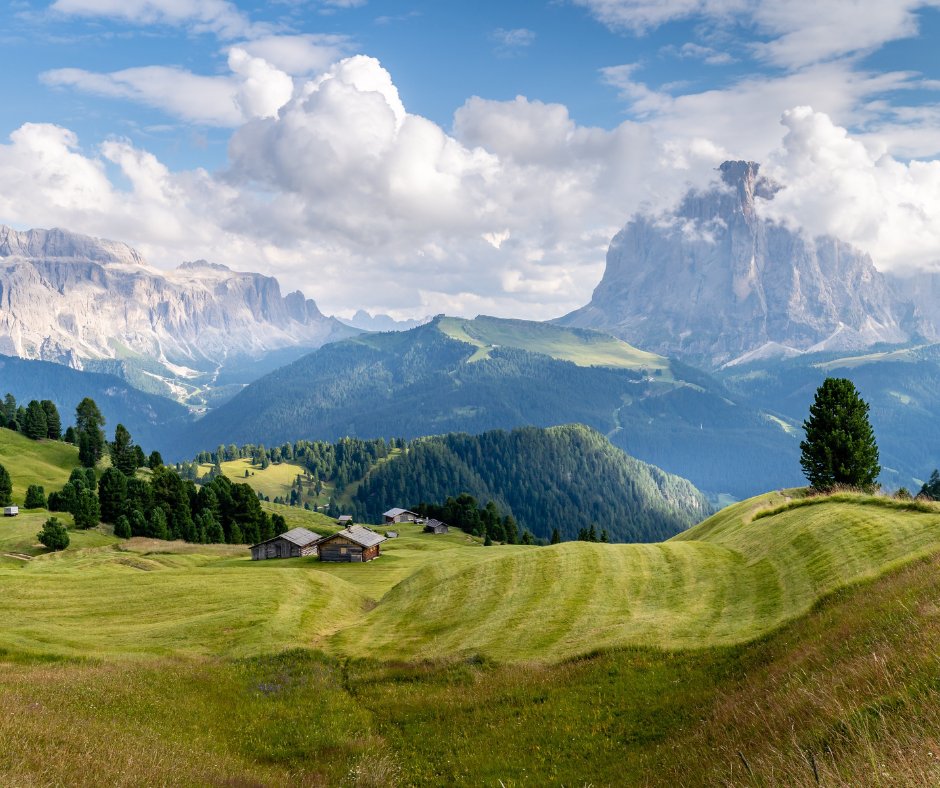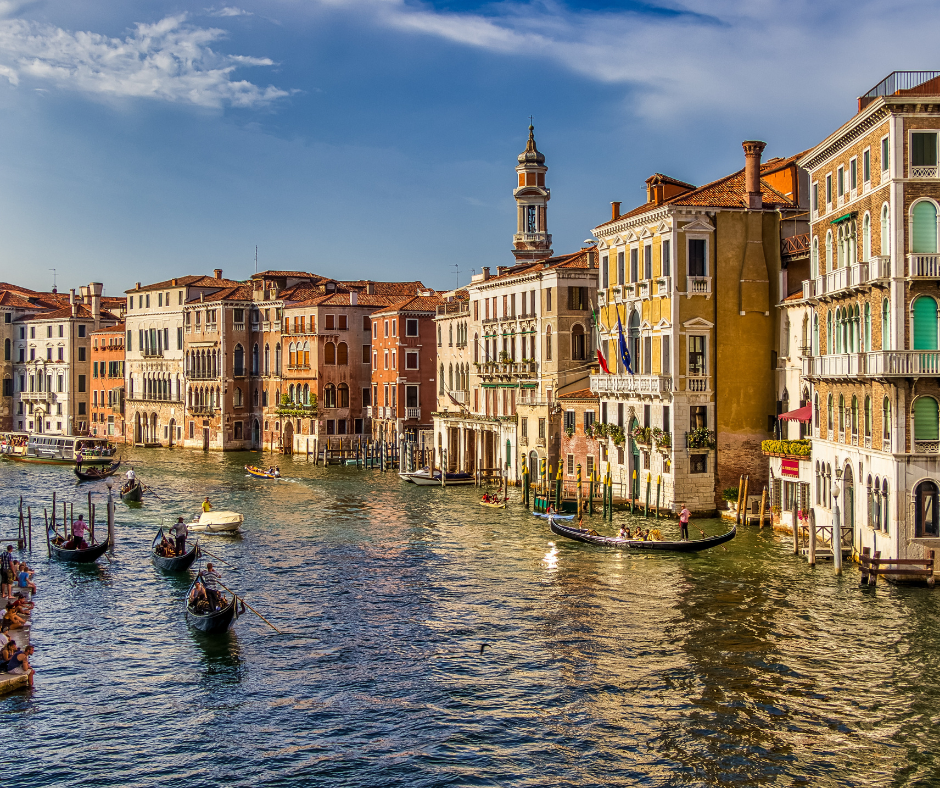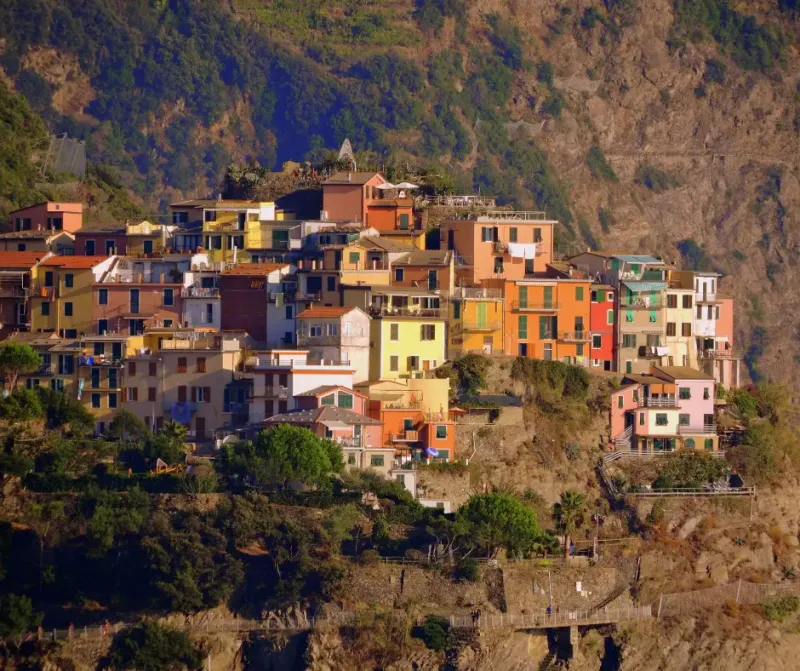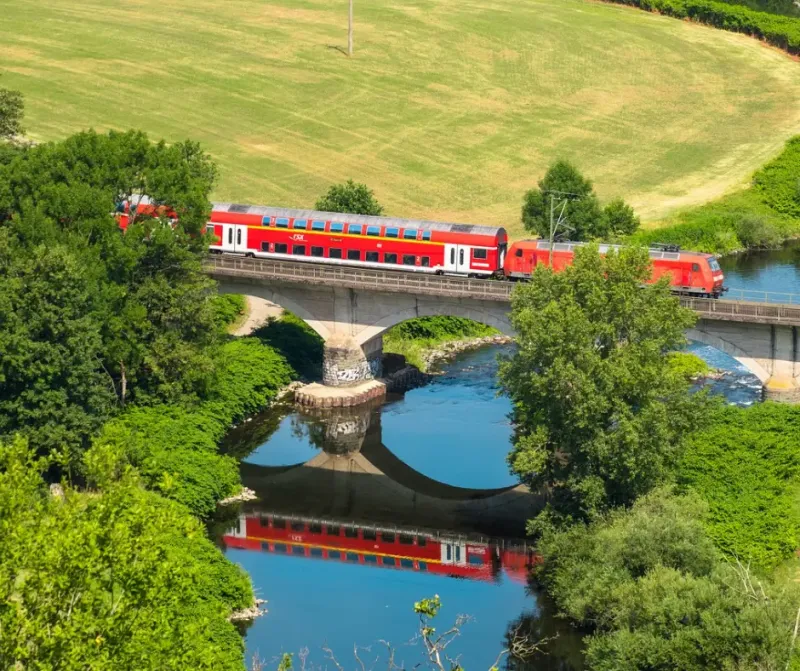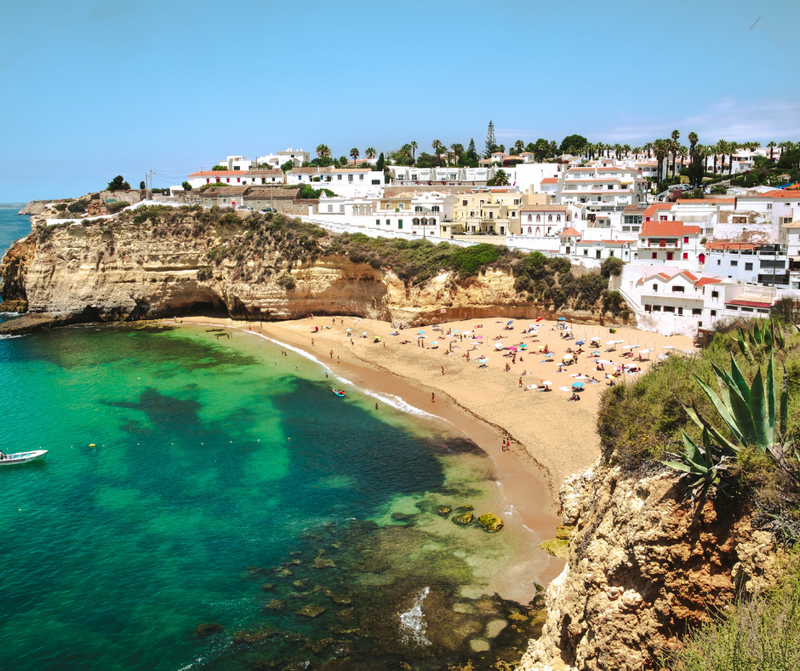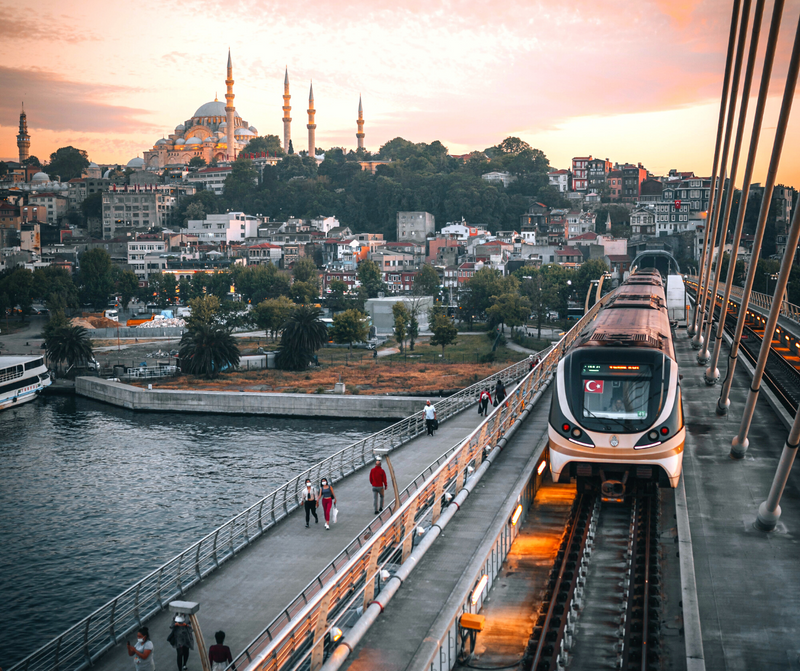🚂 Rome - Florence - Cinque Terre - Bologna - Venice - Milan
Train travel in Italy lets you soak in the country's stunning landscapes and picturesque views. From the rolling hills of Tuscany to the coastal beauty of Cinque Terre, you can enjoy the scenery and capture inspiration for your work. Besides cost-effectiveness, Italy’s train system provides a comfortable and relatively quiet environment. You can also easily adjust your travel plans and stay longer at one place if you're enjoying it.
🌱 Health insurance for Europe
🏛️ #1 Rome to Florence
Train traveling: The official website of Trenitalia is the primary operator of train services in Italy. You can search for train schedules, fares, and book tickets directly on their website
Rome
- In a nutshell: Similar to Lisbon, Rome has been a sought-after destination for nomads for quite some time. The peak season to visit is between spring and autumn. Italian cuisine is renowned worldwide, and Rome offers a delightful culinary experience. From traditional trattorias serving authentic Roman dishes to trendy eateries reinterpreting classic recipes, you will probably never eat elsewhere again.
- Start: Rome's international airport boasts excellent connectivity and serves as an ideal starting point for your journey. Upon arrival at Rome's international airport, you can take the Leonardo Express train to the city center. The fare is approximately €14, and the journey takes around 32 minutes to reach Termini Station, depending on traffic conditions.
- How to get around: Once you arrive at Termini Station, you can conveniently access various parts of Rome, including the city center. The subway system provides frequent departures, with trains running every few minutes. The subway is an efficient way to explore the city, allowing you to reach neighborhoods like Trastevere or Centro Storico (Historic Center) within a short time.
- Where to stay: Consider staying in the charming neighborhoods of Trastevere or Centro Storico (Historic Center) in Rome. Websites such as Booking.com and Airbnb can assist you in finding the perfect place to stay.
- Where to work: Opengra Coworking, Talent Garden
- Laptop-friendly cafés: Molino bakery bar & cucina, AntiCafé Rome
- Where to find community: Digital Nomads Italy, Rome Digital Nomads
- Events in Rome: Rome Future Week
- Train to Florence: To reach Florence from Rome, you can travel by high-speed train. Head to Roma Termini train station and take a train to Florence Santa Maria Novella station. The journey typically takes around 1 hour and 30 minutes. Train tickets can be purchased online in advance or at the station, with prices varying based on the class and booking time.
🍷 #2 Florence to Cinque Terre
- In a nutshell: Florence, known as the birthplace of the Renaissance, is a city rich in history, art, and culture. Its picturesque streets, magnificent architecture, and world-renowned museums make it a captivating destination. With its charming atmosphere and vibrant local scene, Florence offers a unique blend of work and leisure opportunities.
- How to get around: Upon arrival at Florence's central train station, Santa Maria Novella, you can easily explore the city on foot within 30 minutes. Most of Florence's main attractions are within walking distance from the train station. For longer journeys or if you prefer public transportation, Florence has an efficient bus and tram system that can take you to different parts of the city.
- Where to stay: Santa Croce (mix of historic charm and modern amenities) and Santo Spirito (bohemian atmosphere).
- Where to work from: The Social Hub, Impact Hub Florence
- Laptop-friendly cafés: La Cité, La Ménagère
- Where to find community: Digital Nomads & Expats in Florence
- Events in Florence: Gelato Festival, Florence Biennale
- Train to Cinque Terre (La Spezia): Trains depart from Firenze Santa Maria Novella, the central train station of Florence to La Spezia train station. The journey takes about 2 hours.
🍝 #3 Cinque Terre - Bologna
- In a nutshell: Cinque Terre is a picturesque region located on the Italian Riviera, comprising five colorful fishing villages perched on rugged cliffs. Its stunning coastal scenery, charming architecture, and laid-back atmosphere make it a popular destination for digital nomads seeking a balance between work and leisure. The closest city is La Spezia, from where you can get buses or trains to visit the stunning beauty of Cinque Terre.
- How to get around: The best option is purchasing a Cinque Terre Card at La Spezia Train Station, which provides access to the trains running between the villages, as well as access to the hiking trails and certain facilities within that nature reserve. A regional train service connects all five villages: Monterosso, Vernazza, Corniglia, Manarola, and Riomaggiore and makes it convenient to hop between them. If you prefer you can also explore the different villages by ferry. La Spezia is a walkable town and may be the best choice if you plan to work during your time at Cinque Terre.
- Where to stay: Due to wifi connection you should consider staying in La Spezia. The villages are small and often crowded with tourists, which can make finding reliable internet access and quiet workspaces challenging
- Where to work from Sunspace
- Train to Bologna: From La Spezia train station you can commute within 2 hours to Bologna. Trains on this route are operated by Trenitalia and there are frequent departures throughout the day.
🍕 #4 Bologna - Venice
- In a nutshell: Bologna, the capital of the Emilia-Romagna region, is a vibrant and historic city known for its rich culinary heritage, medieval architecture, and thriving university scene. As a digital nomad, you'll find Bologna to be a lively and culturally diverse destination, offering a perfect blend of work opportunities and exploration.
- How to get around: Bologna has an excellent public transportation system, including buses and a well-connected metro line. The city center is compact and easily walkable, allowing you to explore its iconic landmarks, such as Piazza Maggiore and the Two Towers, on foot. Bicycles are also popular means of transportation, with bike-sharing services available throughout the city.
- Where to stay: Historic Center (Centro Storico, heart of Bologna), Bolognina
- Where to work from: Coworking Bologna, The Social Hub
- Laptop-friendly cafés: Scuderia Future Food Living Lab
- Train to Venice: The direct train connection to Venice takes 1,5 to 2 hours.
🍦 #5 Venice - Milan
- In a nutshell: Venice, known as the "Floating City," is a unique and enchanting destination characterized by its intricate canals, stunning architecture, and rich history. You'll find inspiration in its romantic atmosphere, artistic heritage, and charming narrow streets, making it an ideal place to combine work and exploration.
- How to get around: Upon arriving at Venice's central train station, Santa Lucia, the best way to navigate the city is on foot or by using the Vaporetto (water bus) system. Venice is a pedestrian-friendly city, and walking allows you to experience its intricate network of canals, bridges, and hidden alleyways. Vaporettos provide convenient transportation to different parts of Venice and its surrounding islands.
- Where to stay: Dorsoduro (lively and artsy area) or Cannaregio (authentic Venetian experience)
- Where to work from: Venice Coworking, Lemon
- Laptop-friendly cafés: Bar 1 Ciak
- Train to Milan: Continue your journey at Venice Santa Lucia, the main train station in Venice. Traveling to Milan will take approximately 2-3 hours, depending on the train.
🍇 #6 Milan
- In a nutshell: Milan, the fashion and financial capital of Italy, is a bustling metropolis renowned for its cosmopolitan vibe, impressive architecture, and vibrant cultural scene. Milan is a dynamic and forward-thinking city, offering a perfect blend of work opportunities and urban exploration.
- How to get around: Milan has a well-developed public transportation system, offering an extensive metro network, buses, and trams. Walking is also a great option within the city center, allowing you to soak in the atmosphere and discover hidden gems.
- Where to stay: Brera (historic center, bohemian charm), Porta Nuova (modern)
- Where to work from: Campus Coworking, YoRoom, Talent Garden
- Laptop-friendly cafés: Upcycle Bike Café, Gogol & Company
- Travel options: Milan is served by its two main airports Malpensa Airport (MXP) and Linate Airport (LIN). These airports have international connections to multiple hubs around the world.
💶 Estimated costs
Train tickets
Roughly €300 with Eurail pass
Accommodation
This varies greatly, depending on the type of accommodation, length of stay, and the research you do to find good deals. You will also find cheaper accommodation if you travel in the low season, which is in Italy in the late autumn and winter months (Oct-Feb). In general, you can count on average prices starting from €40 per night without staying in dorms and hostels. When calculating a budget per night of €55, you will spend about €1,650 for accommodation per month which is still an average monthly rent for Europe.
Restaurants
Whenever possible, I try to eat fresh and healthy, meaning when I can't find a healthy local option, I seek vegan and vegetarian restaurants. Eating out can cost about €15 including a bottle of sparkling water. That adds up to €450 Euro per month when eating out 1 meal every day. I usually do my own breakfast at home which consists mainly of fresh fruit, eggs, and a smoothie. Shopping grocery and preparing your own meals should reduce the cost.
Coworking spaces
Memberships of coworking spaces are a bit pricey. I try to find accommodation where I can work instead of spending money on coworking spaces. I try to find local meetups, events, or classes to get my social fix. Additionally, working from a coffee shop in the afternoon for a few hours can help as well. Daily rates in Italy start at around €20, and monthly memberships can easily cost more than 200 Euro. When coworking is an essential part of your travel, try to find coliving spaces that include accommodation so you can save money by combining accommodation, and coworking.
🌤️ Best season
The best season for exploring Italy in general, largely depends on personal preferences and the type of experience you are seeking. However, considering the weather, crowd levels, and overall tourist experience, my advice is to travel in spring or early autumn. The weather is typically mild and pleasant, with moderate temperatures. Crowds are generally manageable compared to the peak summer months.
Weather
Italy experiences a Mediterranean climate characterized by mild winters and hot summers. However, weather conditions can vary across different regions of the country. In Rome, summers (June to August) are hot and dry, with temperatures often exceeding 30°C. Winters (December to February) are generally mild, with temperatures averaging around 10-15°C. Milan, located in northern Italy, has a humid subtropical climate. Summers (June to August) are warm and humid, with temperatures ranging from 25-30°C. Winters (December to February) are cooler, with temperatures averaging 0-5°C. Milan experiences more rainfall compared to Rome throughout the year.
Popularity
Italy is a highly sought-after destination, attracting tourists from various European countries. Just like France, many European nations have nationwide summer holidays, while different regions in Italy observe their school breaks between June and August. This results in a significant influx of visitors, particularly from France, Germany, the United Kingdom, and the Netherlands, who flock to popular Italian regions such as Tuscany, the Amalfi Coast, and Sicily.
The heightened popularity during the summer months leads to increased prices, and smaller towns and cities may experience notable surges in accommodation costs. If you plan to travel to Italy in July and August, it is advisable to begin your accommodation research well in advance. Conversely, the months from September to March are generally less crowded, with a slight increase in tourist activity during December, primarily in major cities like Rome, Florence, and Venice.
Costs
Expenses depend on demand and the demand is high in Europe's holiday seasons (July and August). This itinerary is also designed for the slow-traveling nomad with the heart of a traveler. Or for grown-up backpackers with flexible adult jobs and bigger budgets.
This train trip is for you if you travel light, preferably with carry-on luggage only. I did this train ride in September and October 2021 and enjoyed it a lot. The offered scenery is amazing and the mix between city life and nature makes this trip so special to me. I recommend this trip if you can check the following points:
- Light luggage, carry-on luggage.
- Flexible working hours/days.
- Slow travelers enjoy changing scenery overland.
- Tolerance for delays, ad-hoc changes of travel plans, and waiting time.
- Don't mind walking (from the train station to accommodation). Although either Uber, Lyft, or Bolt, and traditional taxis are available in all mentioned destinations.
